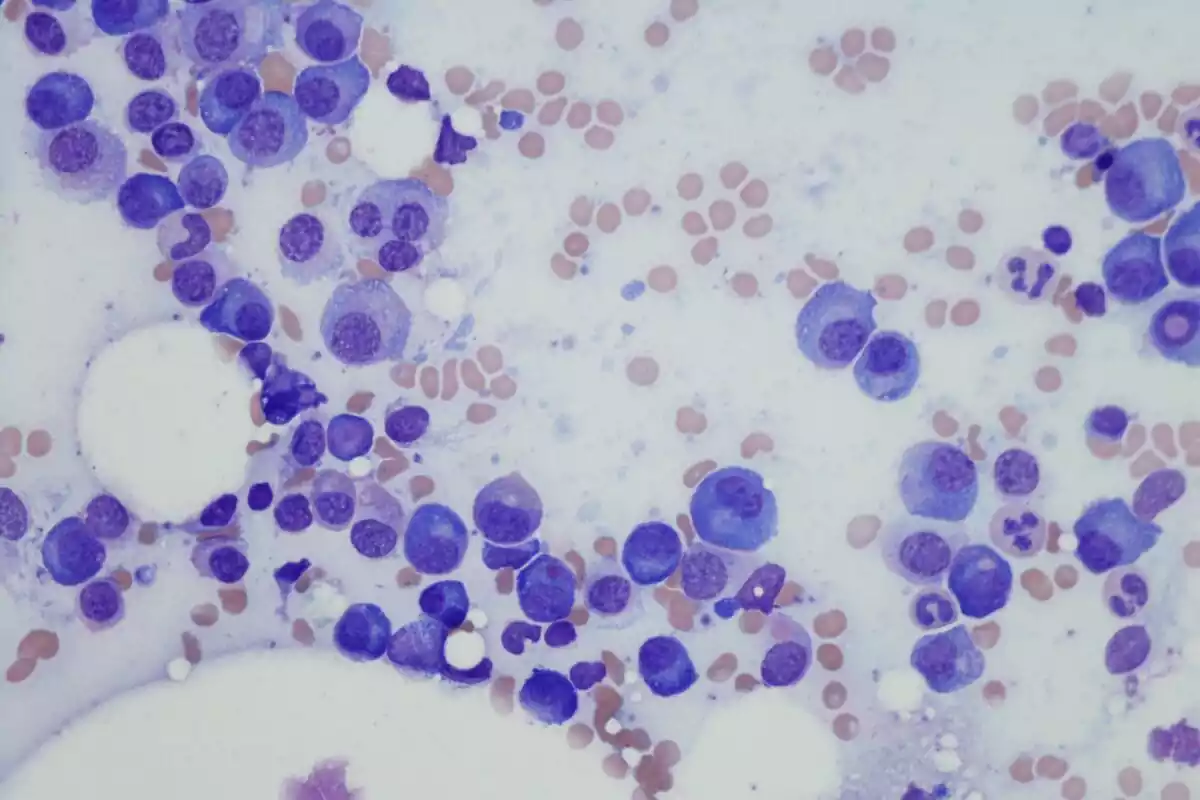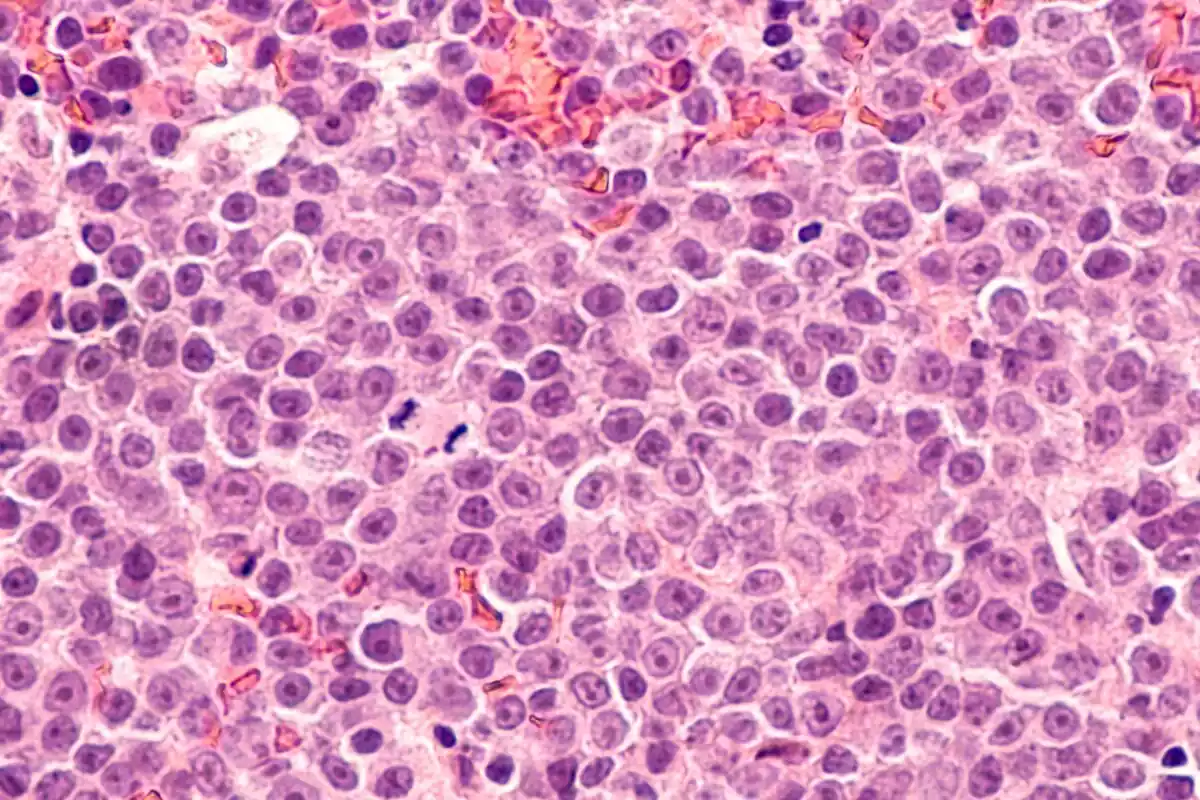As we know, sometimes, what seems a specific or irrelevant discomfort turns out to be a sign of a severe physical problem. This is the case of multiple myeloma, a type of cancer that can get confused with non-specific back pain.
In this article, we are going to analyze what multiple myeloma is, what are its typical symptoms and how medical treatment is applied in these cases –for the time being, it is still incurable, although, at least, it is possible to relieve the discomfort in a significant way.
What is multiple myeloma?
Multiple myeloma is a type of cancer that affects the blood. Specifically, it involves the production of abnormally large amounts of plasma cells. Since these are in charge of creating antibodies or immunoglobulins, which are essential in the elimination of viruses, infections and other external harmful agents, this type of molecule also concentrates in the blood.
In addition, cancerous plasma cells accumulate in the bones and marrow, where they expel other healthy cells and cause the dissolution of bone structures; the latter is due to secretion of specific proteins.
The relation to the marrow is particularly essential, and, in fact, “myeloma” means “tumor in the marrow.” As the disease progresses, cancer cells expand from the marrow to the rest of the body, causing increasingly serious injuries to the organs. The liver is affected in most cases.
Multiple myeloma is related to leukemia and lymphoma. The first is a type of cancer that consists of an excessive proliferation of white blood cells (leukocytes), while the term "lymphoma" refers to the damage of the immune system; two prevalent subtypes of lymphoma are T cells and B cells, which are two types of white blood cells.

Risk factors and prognosis
Among the main risk factors that have been associated with multiple myeloma are excessive alcohol consumption, obesity, or exposure to radiation, as well as being male, over 65, being black and having a family history with this disease, solitary plasmacytoma of bone or monoclonal gammopathy of uncertain significance (MGUS).
According to a report published in the journal Lancet (2016) and based on a global macro-study, multiple myeloma causes around 100 thousand deaths each year. It is believed that approximately 0.7% of the population have this disease at some point in life, especially from 61 years old.
Symptoms
Although multiple myeloma symptoms can vary depending on the location of the damage, it is considered that the most representative ones are: bone pain, anemia, kidney problems, opportunistic infections, and certain neurological signs.
As we know, the most characteristic sign is the pain in the spine and ribs, derived from the accumulation of cancer cells in this region of the skeletal system, which partially destroys the bone tissue. This is why myeloma can be confused with back pain.
Anemia is the result of the abnormal production of red blood cells, while kidney problems are due to the proteins secreted by these cancer cells.
The most common infections are pneumonia and pyelonephritis (a type of kidney infection of bacterial origin). The most typical neurological signs include headaches, muscle weakness, fatigue, or confusion, although other more severe signs may appear as the disease progresses.
Treatment
Despite the advances that have been made in the treatment of different types of cancer, the truth is that, at present, multiple myeloma has no cure. The therapies that are applied to patients affected with this disease are symptomatic and are also effective in reducing the speed with which this cancer progresses.
Without treatment, the life expectancy of people who have developed multiple myeloma is around 7 months; whereas, half of the patients survive at least 5 years if they undergo therapy.
The methods of intervention that are applied in these cases are varied. The treatment of choice is chemotherapy, particularly in people who are younger than 65. In recent years, stem cell transplant has started to be used and, although the results are promising, it is not a definitive cure yet.
Radiotherapy is also often used to relieve bone pain symptoms due to damage caused by myeloma. A bone marrow transplant is another of the most relevant procedures to treat this disease.
References
GBD 2015 Mortality and Causes of Death, Collaborators (2016). Global, regional, and national life expectancy, all-cause mortality, and cause-specific mortality for 249 causes of death, 1980-2015: A systematic analysis for the Global Burden of Disease Study 2015. Lancet, 388(10053): 1459–1544.
GBD 2015 Disease and Injury Incidence and Prevalence, Collaborators. (2016). Global, regional, and national incidence, prevalence, and years lived with disability for 310 diseases and injuries, 1990-2015: A systematic analysis for the Global Burden of Disease Study 2015. Lancet, 388(10053): 1545–1602.
Raab, M. S., Podar, K., Breitkreutz, I., Richardson, P. G. & Anderson, K. C. (2009). Multiple myeloma. Lancet, 374(9686): 324–39.
